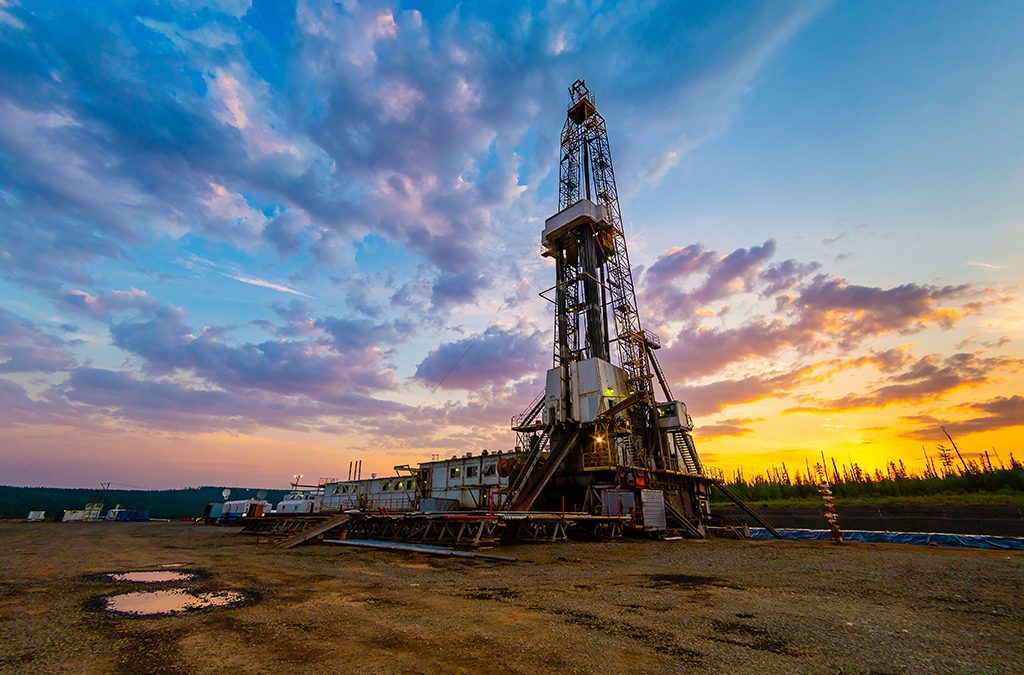
Impreglon Coating Technologies Yield Breakthrough Performance in the search for Energy
Impreglon Coating Technologies Yield Breakthrough Performance in the search for Energy
As our quest for petroleum-based energy takes us deeper and deeper beneath the Earth’s crust, the technologies employed not only become more specialized, but the cost of drilling for these precious resources becomes a high-stakes enterprise few can afford to lose. Consequently, even small increases in productivity can have a big impact on the bottom line. This is especially apparent when considering the cost of drilling a moderate-sized well can easily run more than $250,000 a day, with completion times measured in weeks or even months.
 This is the challenge presented to engineers at Southwest Impreglon: Discover a new coating that allows ultra-sticky shale particles to release downhole and transport out via the water-based drilling fluid.
This is the challenge presented to engineers at Southwest Impreglon: Discover a new coating that allows ultra-sticky shale particles to release downhole and transport out via the water-based drilling fluid.
“We see challenges similar to this on a regular basis,” said Impreglon president and chief chemist, George Butler. “What we bring to bear is a team that understands how to analyze a technical problem and apply the full spectrum of available technologies to a solution – or in many cases, create new solutions.”
The problem was shale would bond so tightly to downhole equipment, drilling and mud circulation became impossible. In fact, they needed hammers and chisels to free equipment retrieved from these dense, gummy formulations.
Working in partnership with an international oil tool manufacturer, Impreglon began testing a variety of coatings, application processes and curing methods. It quickly became apparent that the oldest, and perhaps best known coating, was the most effective. “Sometimes, solutions are staring you right in the face, you need the expertise to see and apply them,” said Mr. Butler. In this case an existing technology had almost ideal characteristics, but required some innovative modification of the binding approach to match the unique demands downhole.
Coating downhole tools with Polytetrafluoroethelyne (PTFE) wasn’t a new idea. But throughout three years of testing, PTFE proved to be the most effective coating for releasing the cement like cuttings. The problem was PTFE’s relatively weak abrasion resistance and wear characteristics were more than a small problem under these extreme conditions. After hundreds of test combinations, scores of modified application processes and countless hours under laboratory and field conditions, the right formulation of abrasion resistance and PTFE’s fast release characteristics finally came together. When all the data was compared, Impreglon and downhole tool engineers were seeing performance rate increases up to fifty percent. A significant enough increase to begin patenting the process.
Due to greatly improved application techniques and a better understanding of molecular bonding at the substrate level, new coating formulations and new patents are today not nearly as rare as they were only a few years ago.
The team of petroleum and coating engineers saw superior lubricity, greater release characteristics, lower friction and excellent corrosion resistance. The results showed longer equipment life, less downtime, higher production and reduced maintenance. Impreglon’s chief chemist asserts that this isn’t an isolated case. According to Mr. Butler, coating engineers’ experience in many different fields gives them the edge in recognizing, applying, refining and proving very specific, fit-to-task solutions that are fine-tuned to many industry’s unique demands.
As with any design element, the greatest chance of success with coatings rests with design integration’s at the earliest phase. Good coating engineers can bring a wealth of process knowledge and application expertise to project designs. Coating engineers can also adapt preparation processes to any given alloy. Depending on the substrate, specific etching, treating and texturing are prerequisites to any application.
In the final analysis, the new generation of coatings provides design engineers another set of tools with which they can modify the nature of any given metal surface to fit the demands of virtually any conditions. Because, if that coating doesn’t already exist, chances are it can be formulated.



 The anticipated completion date for new construction is October 2002 and to become fully operational sometime in April 2003. The new construction will increase the production processing area by an additional 12,000 sq. feet and will increase the large part handling and weight capacity to 10-tons. Also included in the new construction will be the addition of a larger curing furnace to facilitate the processing of the larger and heavier parts. The inside dimensions of the furnace will be 12? x 12? x 40? long and will have an 850 degree F heating capability. Also added will be larger spray booths and blast rooms appropriately sized for the processing of the larger parts.
The anticipated completion date for new construction is October 2002 and to become fully operational sometime in April 2003. The new construction will increase the production processing area by an additional 12,000 sq. feet and will increase the large part handling and weight capacity to 10-tons. Also included in the new construction will be the addition of a larger curing furnace to facilitate the processing of the larger and heavier parts. The inside dimensions of the furnace will be 12? x 12? x 40? long and will have an 850 degree F heating capability. Also added will be larger spray booths and blast rooms appropriately sized for the processing of the larger parts.
Recent Comments